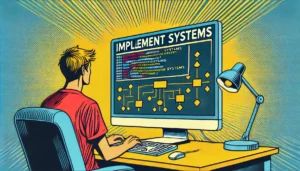VIS was designed with the understanding that integrations to other systems expand the functionality of VIS with limited additional development work. Our system currently uses three different integration techniques to transfer data from the VISCO SQL database into other data platforms and receive information from other systems and import in the VISCO SQL database.
Initially, we will always seek to use the integration modules provided by the software we are integrating with. For Quickbooks Pro and Enterprise addition we used the tools available through Intuit Developer Network (https://developer.intuit.com/) to guide our integration efforts. For Great Plains integration, Microsoft’s E-connect tool (http://www.microsoft.com/en-us/dynamics/default.aspx) was mastered by our developers within weeks enabling us to transfer significant financial data to their system for A/R and A/P operations.
When our customers own and use existing software that does not have its own interface tools (Software Development Kit or SDK), we often find an intermediary such as XML or ODBC to transfer data back and forth. For example, we developed our first Electronic Data Interface (EDI) integration using XML imports into the VIS system from a standard list of required fields in a Sales Order XML file.
Thirdly, when neither of these options is available, we can export and import through Excel when necessary. This often requires additional automation of the process (uploads and downloads of Excel files) and the need for this is evaluated on a case-by-case basis generally.
The technical requirements of transferring data are only half of the work involved in integration with any system. Oftentimes we need to design around the unique integration points to ensure both systems are capable of delivering valuable data consistently when the integration is complete.
For example, when a company has an existing Warehouse Management/Inventory Control system, we feed our inventory data upon “Receipt to Warehouse” in our system to that Warehouse Management system through any of the interfaces described above in real time, many of which have already been standard into Exportable MS Excel files.
If the Inventory Control system all tracks sales, those sales can be individually deducted from our inventory (again in real time) to maintain complete consistency for VIS costing and profitability controls. Using a previously designed XML data import module, we can accept each sale and auto allocate from inventory leaving Invoice prep within our system for the user to complete.
Please click on this link for detailed technical information regarding accounting integration with VISCO: integrating-with-visco




